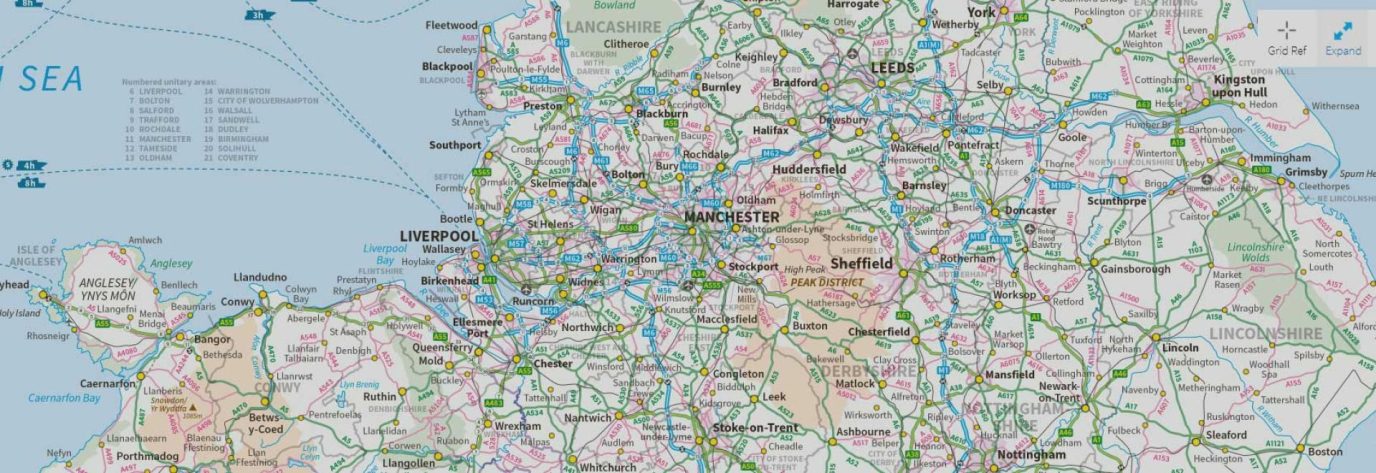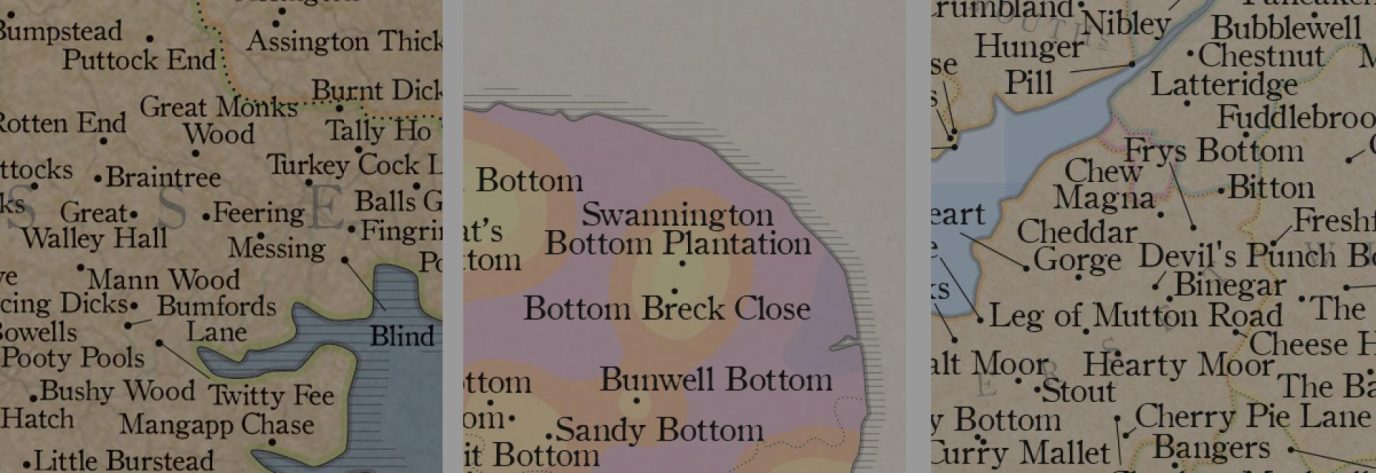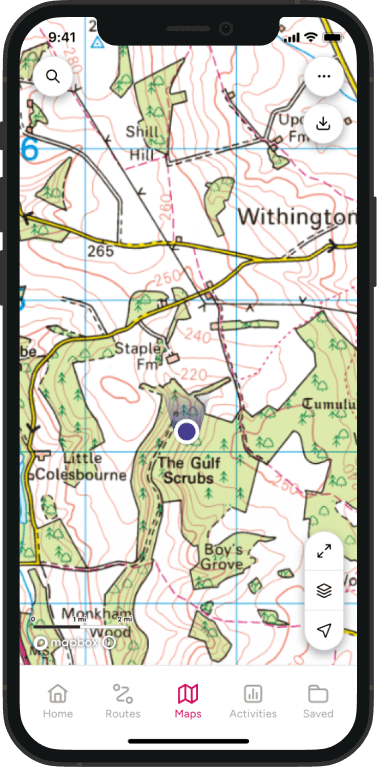There’s loads of foods named after British places, usually (but not always) as they originated there. We’ve collected a feast of our favourites; see how many you already know and if there are any from your local areas you would add.
Jersey Royal Potato
Jersey Royals are a variety of potato with thin skins make them great salad potatoes. They were bred in Jersey by local farmer Hugh de la Haye. They can only be labelled as a Jersey Royal if it’s actually grown in Jersey.
Cornish Clotted Cream
A mandatory addition to a scone, this is a created by heating milk then cooling it slowly, skimming the ‘clots’ to create a super-thick cream. The lush grazing in Cornwall provides the high quality high-fat milk required, while the arguments over whether to add it first or second provides high quality arguments at cream tea.
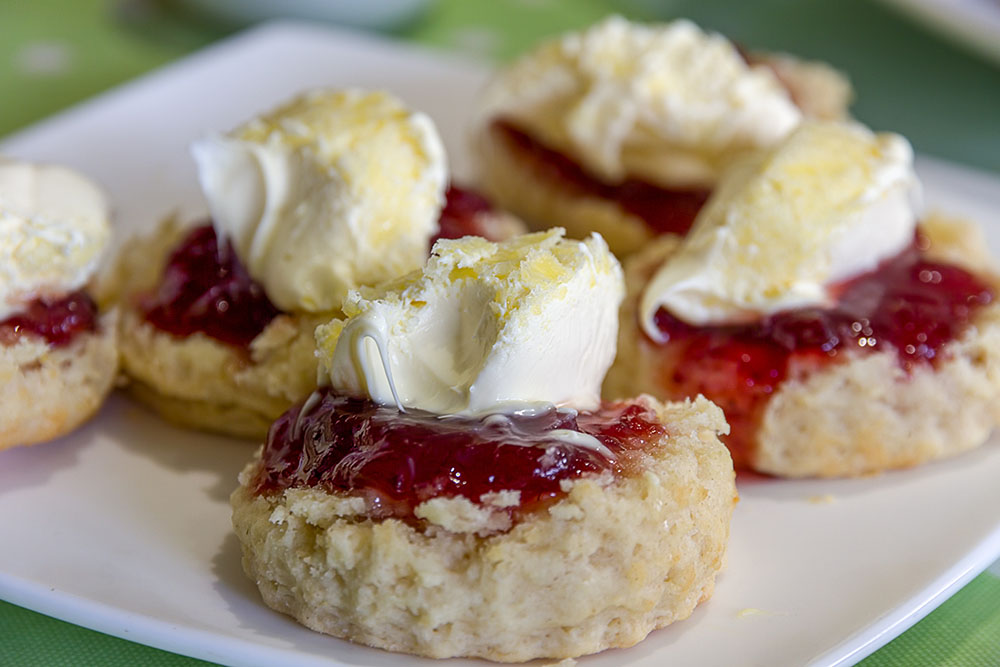
Dover Sole
Also known as the ‘common sole’, this flat fish was named after Dover in Kent, a fishing port where it was often landed. It’s mild taste made it popular as it works well with all sorts of sauces, although stocks are now threatened by over-fishing.
Kendal Mint Cake
A pure sugar energy boost with some peppermint flavouring, Kendal Mint cake was first made in Kendal, Cumbria and became inextricably linked with outdoor activities when it was used by explorers and expeditioners like Sir Ernest Shackleton, Sir Edmund Hillary and Chris Bonnington.
Pontefract Cake
Despite the name these are not actually cakes, but are liquorice sweets named after Pontefract, Yorkshire. The exact origins of the sweets are unclear but it’s thought they have been growing liquorice in the area since at least 1607, with the sweets appearing at some point after. Genuine ones are stamped with an image of Pontefract castle.
Defending local foods
Some foods benefit from the EU Protected designation of origin rules, which means it can only be sold under the famous name if it’s actually grown or made in that location. Famous examples include Champagne, the Cornish Pastie and Bratwurst sausages.
Bakewell Tart (and Pudding)
Legend says this was first created by an inattentive cook in Bakewell, Derbyshire who left out the almond paste while making a tart filling and instead added it as a separate layer on top, although there’s considerable dispute with at least three different origin claims. Given how delicious they are, I don’t think anyone really cares that much.
Eccles Cake
Although probably much older, the first commercial Eccles cakes were sold in a bakery in Eccles, Lancashire in 1793. Many parents like to tell small children the filling is really squashed flies, then wonder why they refuse to even try them until they are adults. No-one knows why they do this.
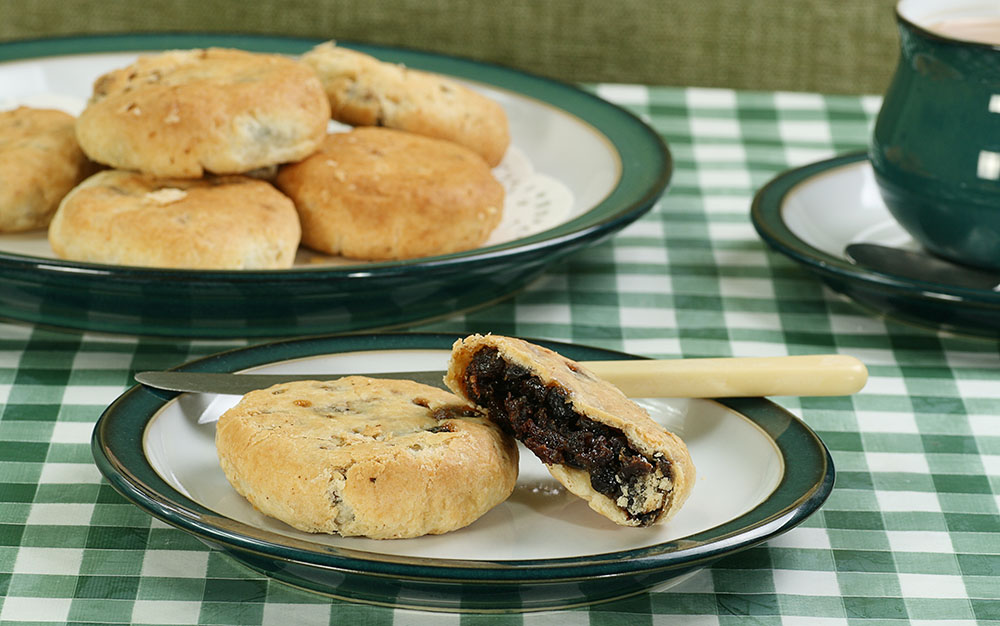
London Buns / Chelsea Buns
London buns and Chelsea buns are similar yeast-based buns with spices and an iced topping. They have dropped out of fashion over the last few decades, replaced by imports like doughnuts and Belgian buns. The Chealsea bun first appeared The Bun House, Chelsea, popular with George III, which may explain his impressive girth in older age.
The Sandwich
It’s very unlikely The Earl of Sandwich (Kent) was really the first person to stick some fillings in sliced bread and call it a snack, but the name stuck. Apparently it became popular with the Earl and his friends who liked some late night snacks while gambling, as they could eat using one hand, without stopping play.
Yorkshire Pudding
First mentioned by this name in a recipe book in 1747, it’s probably considerably older. One writer suggested it became associated with Yorkshire as they tended to use coal instead of wood for cooking, which created the higher temperatures needed for a big, fluffy Yorkshire pudding.
Cheddar Cheese
By far the most popular cheese in the Britain. Dairy farmer Jospeh Harding made huge advances in cheese-making technology in and around Cheddar in Somerset, allowing cheese to be made faster and more consistently than traditional methods using a processed called ‘cheddaring’. Cheddar Gorge then provided caves ideal for maturing the cheeses. The techniques used were exported worldwide, so you will find Cheddar cheese nearly everywhere worldwide – not bad for a not particularly large village.
A special mention of Coleraine Cheddar, which is a two for one – named after Coleraine in Northern Ireland, and the cheddaring process developed in Cheddar.
Red Leicester
Another cheese, this one is named after the County town of Leicestershire where it was first made and was originally coloured with beetroot or carrot juice to create the distinctive dark orange colouring.
Stilton
I’m not sure who first decided that cheese full of blue mould was actually delicious, but Stilton, originally from Stilton, Cambridgeshire is one of the best known. Like some others in this list, Stilton cheese comes under Protected Designation of Origin rules, meaning it must be made is a specific area to be called Stilton… but that area now excludes the town of Stilton!

Wensleydale
The last cheese – I promise! Originating from Wensleydale in North Yorkshire, it’s thought to have started out being made by Cistercian monks, before local farmers took over. It had been in long term decline in popularity until Wallace (of Wallace and Gromit) declared his love for it, massively boosting sales.
Lancashire Hotpot
A tasty stew of lamb and potato, it was probably one of the earliest potato-based dishes after they were introduced to Britain some time in the 16th century. If you want to make one you’ll need stewing lamb, lamb kidneys, carrot and potato with butter or dripping as a thickener.
Branston Pickle
Branston is now a food brand, but it all started out with a popular pickle first made in 1922 in Branston, Staffordshire. Ingredients include carrot, swede, onion, cauliflower, dates, tomato, apple, and lemon plus various herbs and spices in a malt vinegar based pickling agent. It’s unclear how people managed to make cheese sandwiches before it was available.
Worcestershire Sauce
A fermented food flavouring sauce, and bane on people learning English, it was first developed in Worcester in 1837. It’s thought to be an attempt to recreate Roman-era ‘garum’ fermented fish sauces, mentioned by Pliny the Elder (no relation).
Arbroath Smokie
Salted and smoked haddock, named after the town of Arbroath, Angus. Legend says it was created accidentally after a fire in a fish storage shed, but smoking fish and meat for preservation was a technique known to the Vikings, who had strong links to the area, so that was probably made up to make them sound cooler.

Scotch Egg
Egg wrapped in sausage-meat and bread crumbs and then deep fried (of course), whether these were actually created in Scotland at all is very much debated. Telling tourists they are actually Haggis eggs is encouraged.
Welsh Cakes
A simple sweet flatbread flavoured with dried fruit and spices, they were easy to make and popular as a snack for miners. They were compact enough to put in a pocket or pack, and tough enough to survive the difficult conditions of the mines.
Ecclefechan Tart
No-one really knows how this fruit in pastry tart came to be named after the town of Ecclefechan in Dumfriesshire, but over the last few years they have become a popular alternative to mince pies as Christmas time.
Cornish Pastie
Using bread or pastry as a wrapper is not that unusual – some Roman street food was similar – but the Cornish Pastie is one of the most popular in Britain. A real Cornish Pasty must be made in Cornwall and use beef, but you can get a pasty (without the ‘Cornish’ bit) almost everywhere, with fillings from curry to chicken and leek.
A special mention to the Forfar Bridie which is basically a pasty with a shortcrust pasty, originating from Forfar, Scotland and popular all over Scotland
HP Sauce
Although invented by a grocer in Nottingham, H.P. Sauce is named after the Houses of Parliament, where the honourable members had apparently started using it. Either that, or this was an early example of some sneaky marketing tactic designed to associate the brand with power and influence.
HP Sauce bottles still show a picture of the Palace of Westminster and the Elizabeth Tower containing Big Ben.
Eton Mess
Thought to originate from Eton College in the 1890s, Eton Mess is a delicious summer dessert, forever linked with cricket as it was served at matches. When served at arch-rivals Harrow School they rename it Harrow mess, just to annoy the Etonians.

Dorset Apple Cake
Named after the south-west county, this spiced apple cake is a perfect snack after an chilly autumn walk. It’s also one that’s easy to make at home and is amazing still warm from the oven.
I hope this inspires you to try some of these quintessentially British foods!

